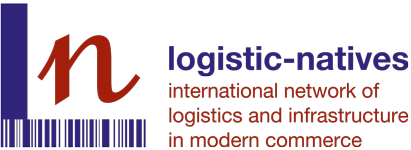Explained simply by CLS: The new model for measuring carbon and GHG emissions in parcel delivery – Part 1

Over 4 billion in Germany, 20 billion in the US, and 120 billion in China – an impressive number of #parcels were shipped in 2021. Today’s #customers are generally more aware of the dangers of #climatechange and are #demanding that the #transport and #lastmiledelivery of their #B2C #purchases is #sustainable. This is a growing #challenge for the #logistics/postal #industry.
Until recently there were no established #rules in this #area. #Sustainability was primarily seen as a #marketing tool, with minimal #cost and #effort being expended to #boost perceived #sustainability. “Greenwashing” was a widespread phenomenon.
𝗗𝗶𝗴𝗶𝘁𝗮𝗹𝗶𝘇𝗮𝘁𝗶𝗼𝗻 𝗼𝗳 𝗿𝗲𝘁𝗮𝗶𝗹 𝗮𝗻𝗱 𝗹𝗼𝗴𝗶𝘀𝘁𝗶𝗰𝘀 𝗮𝗹𝗹𝗼𝘄𝘀 𝗲𝗺𝗶𝘀𝘀𝗶𝗼𝗻𝘀 𝘁𝗼 𝗯𝗲 𝗺𝗲𝗮𝘀𝘂𝗿𝗲𝗱, 𝗮𝗹𝗹𝗼𝗰𝗮𝘁𝗲𝗱, 𝗰𝗼𝗺𝗽𝗮𝗿𝗲𝗱, 𝗮𝗻𝗱 𝗿𝗲𝗴𝘂𝗹𝗮𝘁𝗲𝗱
The #digitalrevolution in #commerce and #logistics has changed the #rules of the game. Data on each #parcel, its #contents and #packaging are now digitally collected, and linked to #information about the parcel’s #receipt, #transport, #freight, #storage, and #delivery. The #industry is increasingly obliged to submit Electronic Advanced Data (#EAD) in order to comply with #customsclearance, #transportsecurity, #productsafety and #VAT #regulations. The #data are already #available and regulated, and can be used to define and regulate “sustainability” in the postal sector – the relevant regulations are currently being developed at global (#UPU) and regional (#EU) level.
𝗦𝘁𝗲𝗽 𝟭 (𝗮𝗻𝗱 𝗽𝗿𝗲𝗰𝗼𝗻𝗱𝗶𝘁𝗶𝗼𝗻): 𝗔𝗹𝗹𝗼𝗰𝗮𝘁𝗶𝗼𝗻 𝗼𝗳 𝗰𝗮𝗿𝗯𝗼𝗻 𝗮𝗻𝗱 𝗴𝗿𝗲𝗲𝗻𝗵𝗼𝘂𝘀𝗲 𝗴𝗮𝘀 (𝗚𝗛𝗚) 𝗲𝗺𝗶𝘀𝘀𝗶𝗼𝗻𝘀 𝘁𝗼 𝗶𝗻𝗱𝗶𝘃𝗶𝗱𝘂𝗮𝗹 𝗽𝗮𝗿𝗰𝗲𝗹𝘀 – 𝘁𝗵𝗲 𝗱𝗶𝗴𝗶𝘁𝗮𝗹 𝗲𝗻𝘃𝗶𝗿𝗼𝗻𝗺𝗲𝗻𝘁𝗮𝗹 𝗽𝗮𝗿𝗰𝗲𝗹 𝗳𝗼𝗼𝘁𝗽𝗿𝗶𝗻𝘁
When #individual parcels are collected (i.e., #warehousing and #fulfilment), consolidated for #freight and #transport (i.e., #global multi-modal #supplychains), received for #sortation and dispatched for final #delivery according to the #preferences of the end recipient, electronic data elements are available and exchanged in advance.
This exchange of #EAD is mandatory and enforced:
-UPU: since 1 January 2021, all postal operators must send EAD when exchanging #postal #items
-EU: #customsclearance and VAT rules requiring EAD have been in place since 1 July 2021, and similar #models are in place in all major #markets
-IATA: transport security requires Preloading Advance Cargo Information (#PLACI)
The existing EAD elements can also be used for other purposes, and one major area of application will be to allocate, quantify, and report the #environmentalimpact of parcel #logistics and delivery operations at item level.
Click here for the LinkedIn-Article.

Walter Trezek
Document Exchange Network GmbH

